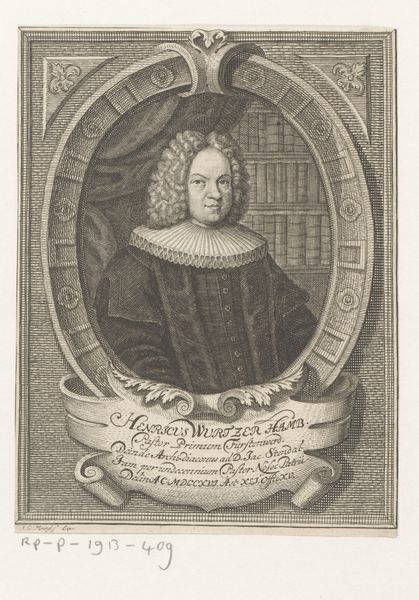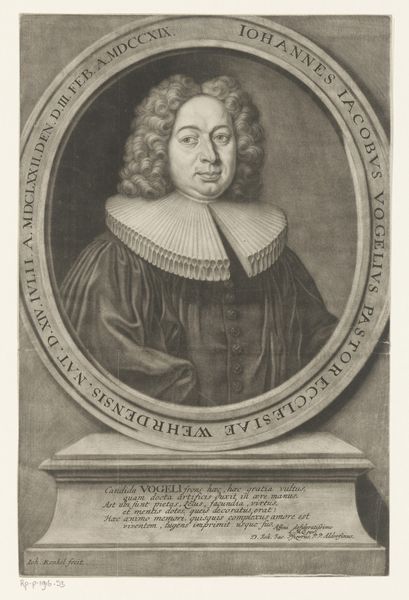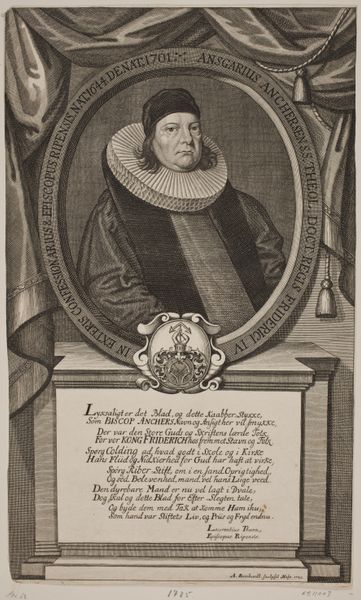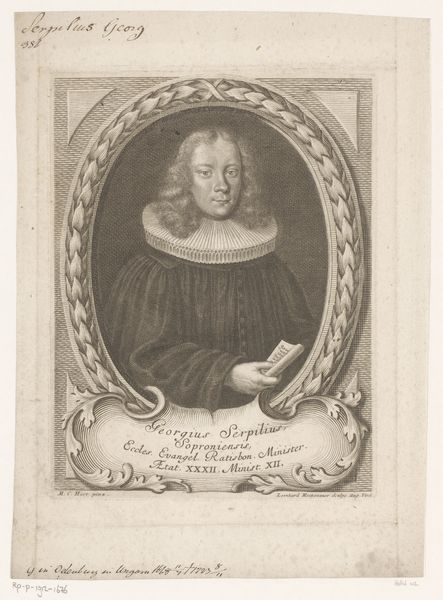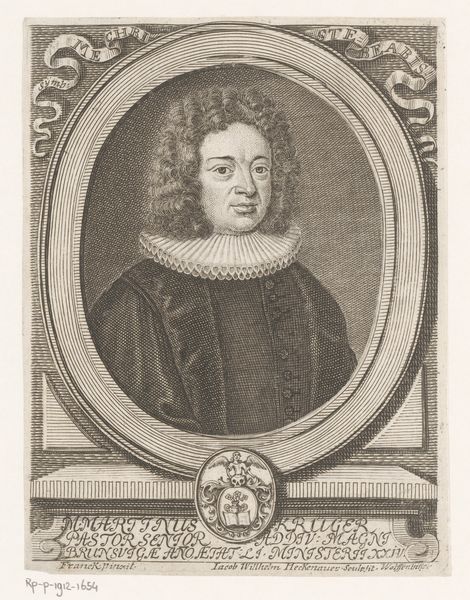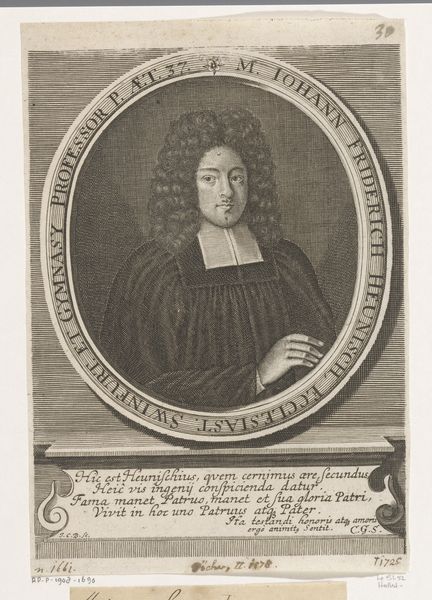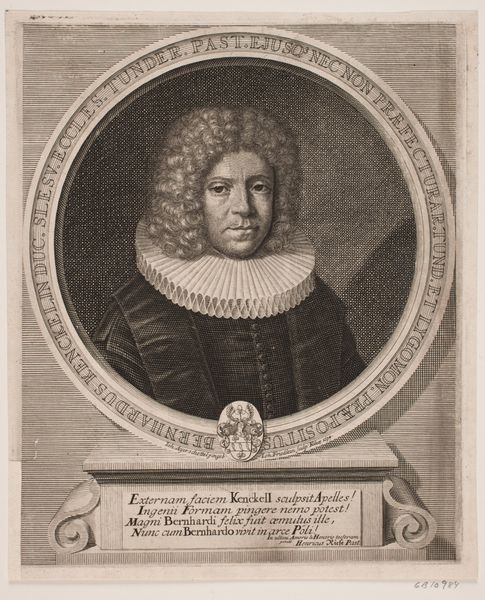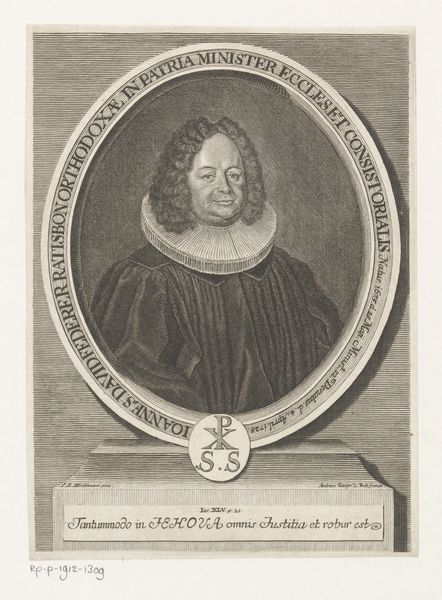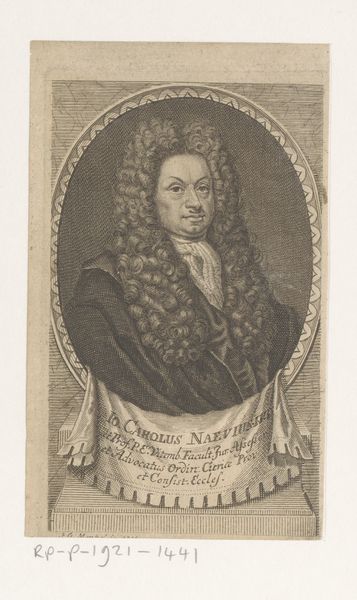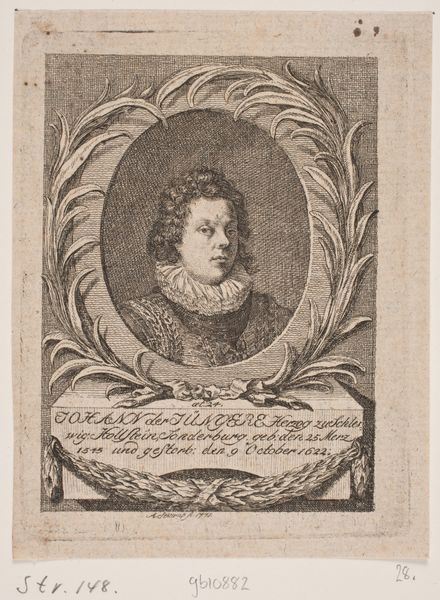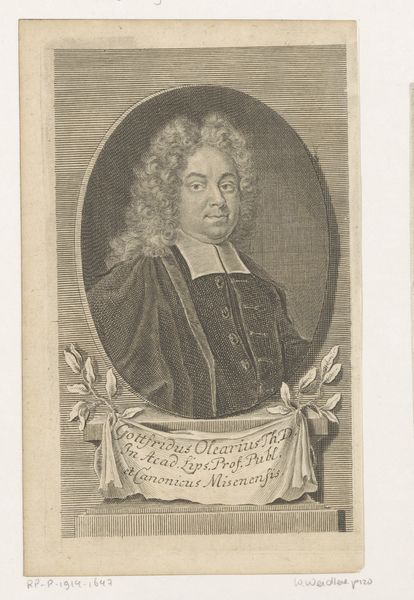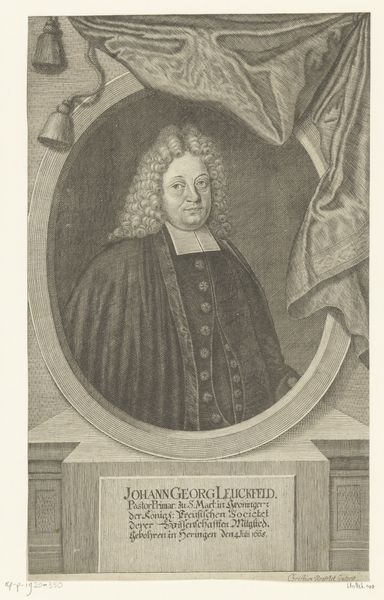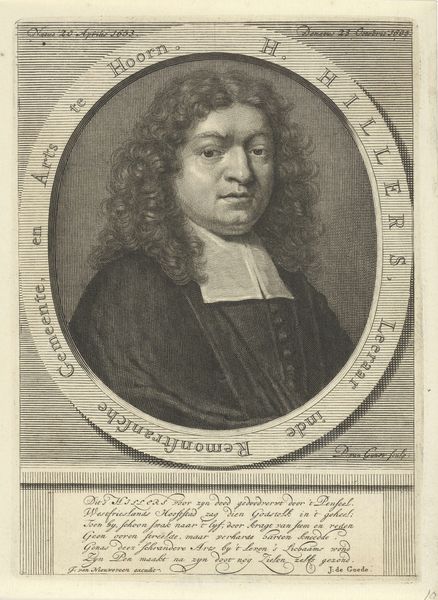
print, engraving
#
baroque
# print
#
history-painting
#
engraving
Dimensions: 143 mm (height) x 84 mm (width) (plademaal)
Editor: We’re looking at a portrait, titled “Pastor A.J. Borch,” an engraving, dating roughly from 1735 to 1750. It seems formal, official even. What stands out to you about this piece? Curator: The immediate thing that jumps out is how this print functions as a piece of public imagery. These kinds of engraved portraits were hugely important in disseminating information and solidifying social hierarchies. This image broadcasts Borch's status through his attire and the surrounding Latin inscriptions. Do you notice how the inscription actually frames and almost boxes him in? Editor: Yes, it's very prominent, surrounding him like a halo. So, this portrait wasn’t necessarily about capturing Borch’s individual likeness, but more about broadcasting his social role? Curator: Precisely! The visual language of Baroque portraiture served specific socio-political purposes. It's a tool to communicate power, piety and the social structure, and this wasn’t just an aesthetic choice. How do you think access to images like these could have influenced people at the time? Editor: Well, since prints can be reproduced, this image could reach a broader audience than, say, an oil painting. It feels like a form of public relations, solidifying Borch's authority and image among his community. Almost like early modern social media, building a specific reputation! Curator: That's a useful way of framing it. It shows how carefully constructed even seemingly straightforward portraiture could be, in maintaining and influencing societal perceptions and hierarchies. This helps us understand the role of visual culture in shaping early modern society. Editor: It’s really eye-opening to consider how images were strategically used in the past, not just for artistic expression, but to convey power. I will remember to analyze who has access to them. Curator: Indeed. Analyzing access and the public role is key!
Comments
No comments
Be the first to comment and join the conversation on the ultimate creative platform.
